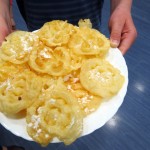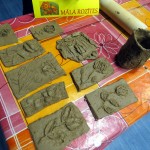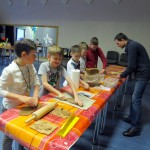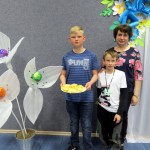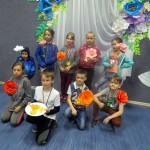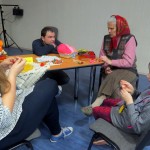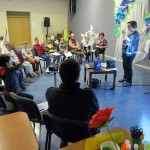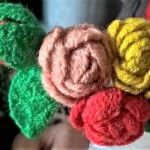Maltas children and youth centre children gave Latgale festival five types of roses
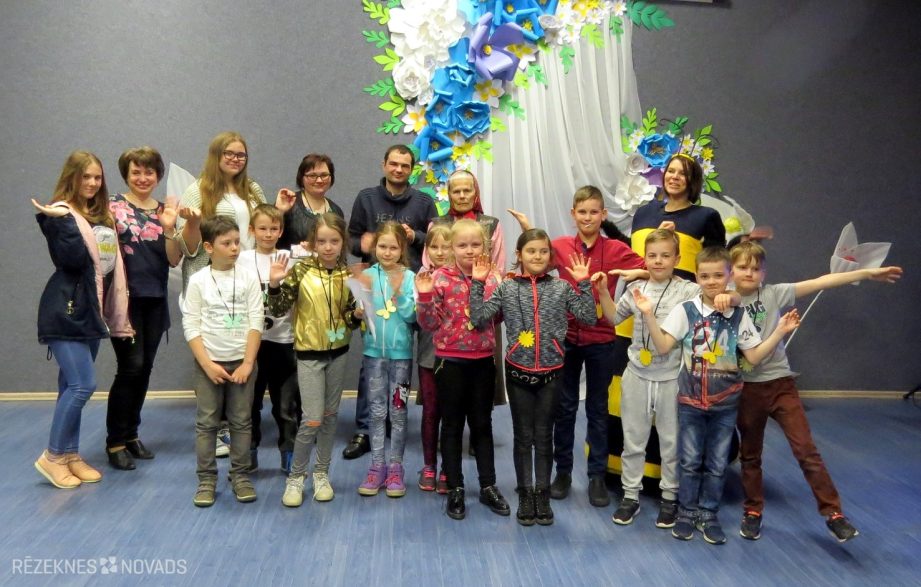
“Don't get into a river twice,” said the ancient Greek philosopher Hecracted. You can't and do n't, because it's also a time that brings together the events of different sizes and makes it possible to assess, conclude, search for paths.
The beginning of May 2017 was the time that neither can nor need to be repeated. It is recorded in history with a special notion that has taken place, expressed and intended for much of Latgale. For the time being, the request for the recognition of Latgale Day at national level was fulfilled – April 27 will be the day of Latgale Congress. I want to believe that a good tradition will also be the lessons of last-year school lessons in Latgale schools (even once a year!), which, admittedly, was with a special aura of innovation, as the people familiar to the pupils were familiar with the Latgalians.
AT Maltas in the centre of children and young people, we watched the multifilm latgalically last year, turning the Latgalian “Breinumu scrytuli”, studying the map “with Latgale heart”, but this year a new approach to the presentation of children with Latgali was sought, so in the afternoon of 26 April, “Maltys barnu ruzeitis Latgolai” was offered an educational presentation and several creative workshops, playing the theme of Rūzens (roses) and flowers.
In the presentation, the children learned about the historic Latgale Congress (1917), the latest and also visually brightest books of Latgalically (with the possibility of self-decorating them, e.g. “Gothel pi Boņuk”, Inetas Atpiles-Juganes “Mudynuot muokuļi”, Onton Slišana “good, good”, etc.), as well as drawing the minicocity of his family (unfortunately, some children did not even know the names of their grandparents!). The most interesting thing, in the children's view, was a lottery where, at the small commemoration, the prizes were all seen in response to questions about both Latvia and Rezekne, as well as the dough of the flowers (for example, what is it – “Nicur nagrow, the silk pi's prayer silk?”) and in response to questions about roses (for example, “in which year the oldest rose is planted, which grows still?” and “how many tons of petals are needed to obtain 1 kg of rose oil?”).
A separate informative section was dedicated to Rezekne as a city, the only one in Latgale to honour the rosis word. The children learned about the roses festival, which was organised every year by the Rēzekne Technology Academy, and could be heard on the Rēzekne, “a city with rose hairs.” He also listened with interest to the legend of the princess rose and saw a photograph of a yarn of yarn that was once intended as a gift of the city's representation! For the small but children's useful gifts, thank the City Council of Rezekne.
On the other hand, the people of the Latgalian language were able to pass through the names of the flowers (thank you very much for helping the journalist Maruta Latkovskaya). But there were also speed and enthusiasm-based tasks, such as how much the vowels were called “Rouseite.” I also mentioned interesting facts: the smallest Rose is like a rice grain and its name is “Si”; it is called the white turtle in the Nautre of the Round, but the beauty of the bitterness of the woodland. And, of course, there was a Latgalian gambling song “plant, plant, bitter” while children – butterflies and flowers – played the flower games in the curiosity of all events around the flying bees (Intas Bules).
The lesson is the familiarisation of his own municipality, but when dealing with children, the information must be only one of the components, necessarily entertainment, creative elements. And this time, in our case, these were the masterworkshops in which the roses took place: from the clay (the schoolteacher Viktor Bogdanov), from the paper (see Inta Bule), from the yarn (Maltese Eleonora Sinkavska), from the meal (see Rita Sinkavska).
I do not know if there will be a valid word “unfortunately” in this respect, but in the event it was not only latgalically but sometimes Latin and even a few words translated into Russian... But the main thing was to show children that the latgalic is alive in various forms. I believe they felt it, like the traditional Latgalian biscuit, the greasy scent of the greedy “Rouseith”, which surrounded the whole body and led children from working to the kitchen! Are the flour roses not the value of the Latgalians? Most children had not seen how they were cooking! Perhaps the lesson hour OF Maltas BJC was a small but tasty bench opposite Latgale.
The river continues to flow and it is not always necessary to climb into it, possibly with mild touch to the surface of the water to gain permanent sensation …
Skaidrite Squicky,
hourly Hour Manager Maltas BJC
